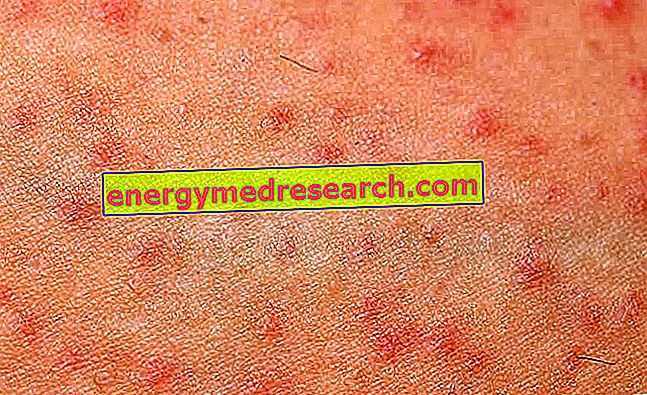Related articles: Vitiligo
Definition
Vitiligo is a skin disease characterized by deficiency (hypopigmentation) or total absence (depigmentation) of melanin, in some skin areas. The exact cause of vitiligo is not yet clear, but we know that in the affected areas a functional blockage of the melanocytes occurs. As a rule, these cells allow the skin to absorb the energy needed to produce melanin, the pigment that gives the skin dark hues.
The proposed pathogenetic mechanisms include the autoimmune attack of melanocytes, which would then be damaged by abnormal antibodies, losing the ability to produce melanin. In fact, about one third of vitiligo patients also live with some autoimmune disease (Addison's disease, diabetes mellitus, pernicious anemia, Graves' disease and Hashimoto's thyroiditis).
According to other hypotheses, vitiligo could be linked to a reduced survival of melanocytes or a primary deficit.
Vitiligo can be family (often tends to recur within the same family) or acquired. Occasionally, it develops after a direct physical injury to the skin (Koebner's phenomenon).
Most common symptoms and signs *
- Alopecia
- gray hairs
- Skin discoloration
- Exophthalmos
- Pallor
- itch
Further indications
Vitiligo is characterized by the appearance of unpigmented patches of varying sizes; in these areas the skin becomes lighter, almost white and, apart from the chromatic alteration, it is absolutely normal. The hypopigmented areas are usually well demarcated and often symmetrical. Depigmentation can be localized (affecting 1 or 2 areas of the body) or spread over the entire skin surface. In most cases, vitiligo affects the face, fingers, back of the hands, flexor surfaces of the wrists, forearms, elbows, knees, tibial crests, dorsal surface of the ankles, axillae, navel, nipples and the inguinal and anogenital regions. The hairs in the affected areas are generally white. Sometimes their partial fall or thinning is observed.
Vitiligo sufferers are more prone to sunburn and sunburn, as the skin lacks the natural protection of melanin. For this reason, all depigmented areas must be protected with very high protection clothing or sunscreens. Often, the depigmented skin is evident on physical examination and is accentuated if illuminated with blue light from the Wood lamp.
The first-line treatment consists of topical corticosteroids. Topical calcineurin inhibitors (eg tacrolimus and pimecrolimus) can also be used, particularly useful for treating areas of the skin such as the face and groin. Slightly large stains can be masked with makeup. Furthermore, to improve vitiligo, it is possible to undergo phototherapy, laser therapy or melanocyte transplantation.



